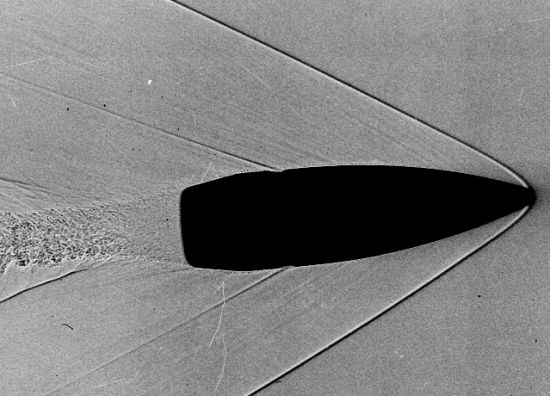Rick, "In my assessment longitudinal clearance needs to be no less than 1/14th of length, assuming reserve buoyancy in the ends, and beamwise 1/7th the beam to avoid continuous slapping of crests."
I heartily agree, especially for long slender low buoyancy hulls. And according to the Beaufort wind scale 17 to 21 knot winds generate 4' to 8' seas which are going to slam the bridge deck of any long slender hulled vessel and make surfing very dangerous.
Long slender low buoyancy wave piercing hull designs just don't cut it for an ocean going vessel . . . unless the captain is very careful, it is all about seamanship, sometimes.
There is a common hull design based on the very low drag bullet design, or Sears-Haack body.
or this shape
http://www.aerospaceweb.org/question/aerodynamics/bullet/bullet2.jpg
most commonly known as a boat tail : )
I see that exact shape on the underwater portion of all of the fast boat hulls.
What it does it generate lift and reduces drag at the bow and provides volume to lift the boat over the waves so that less bridge deck clearance is needed.
The tip of the shape needs to be above the water level and the it needs to taper to the horizontal portion of the shape. The entry angle is apx. a radius/beam of 12/1 or so.
Talador
__._,_.___
Posted by: taladorwood@yahoo.com.au
| Reply via web post | • | Reply to sender | • | Reply to group | • | Start a new topic | • | Messages in this topic (9) |
.
